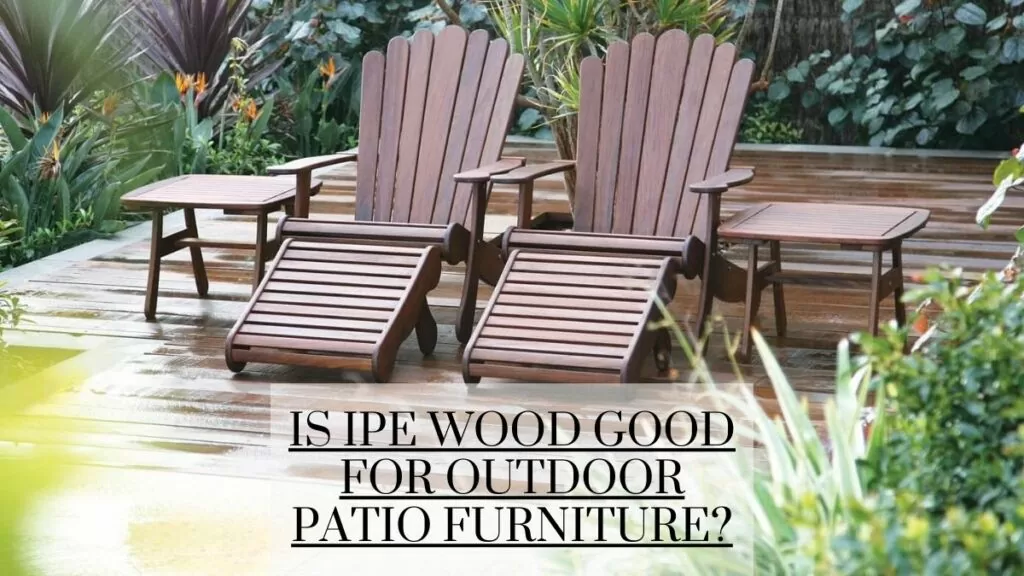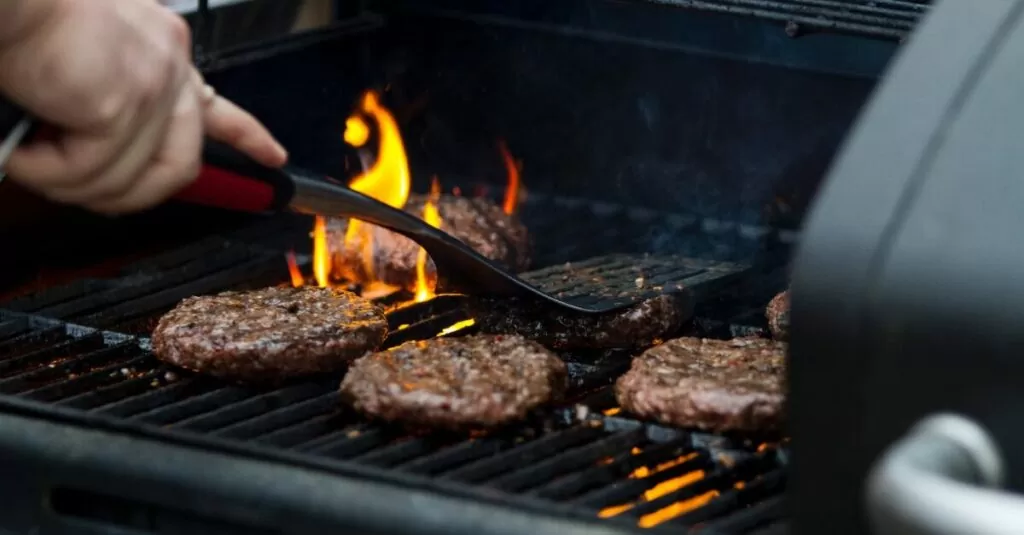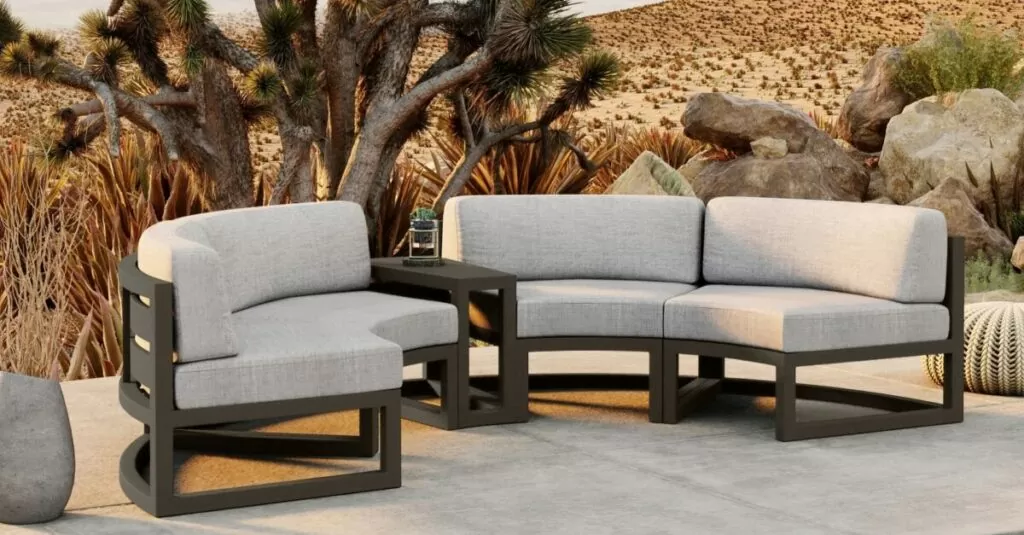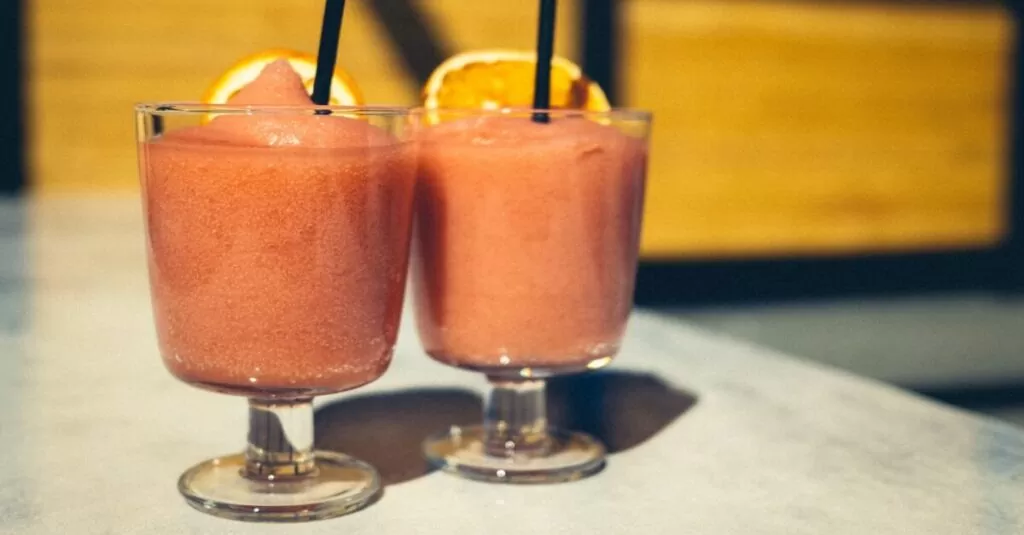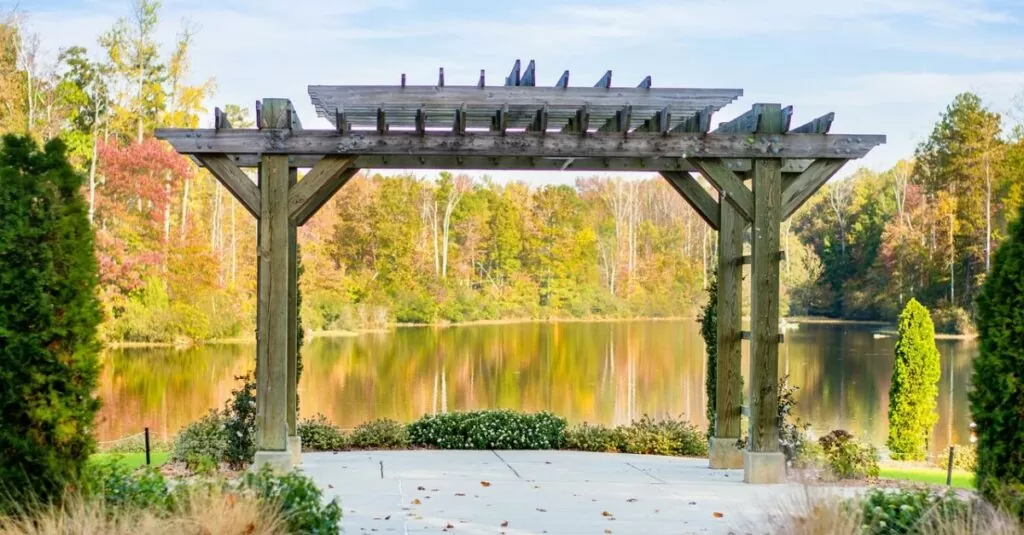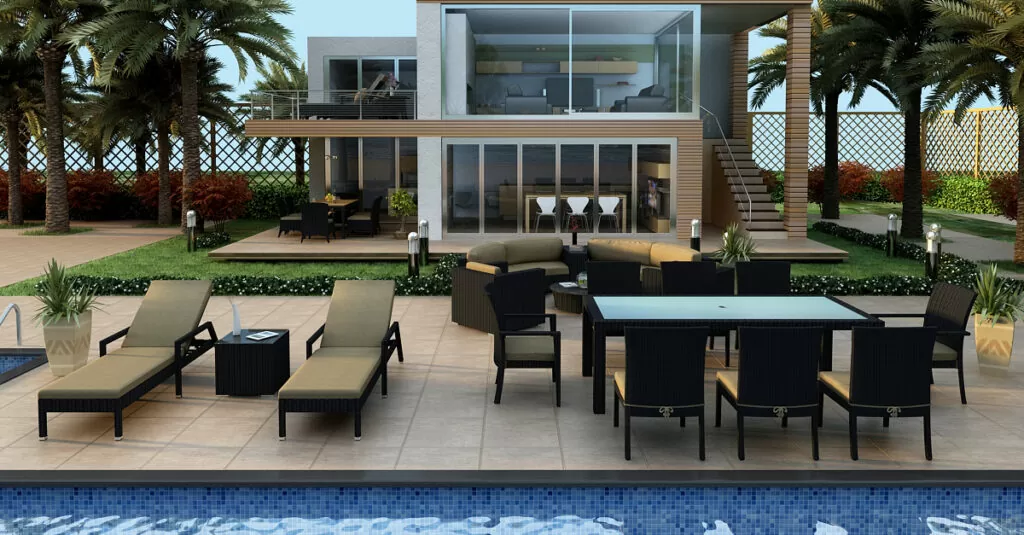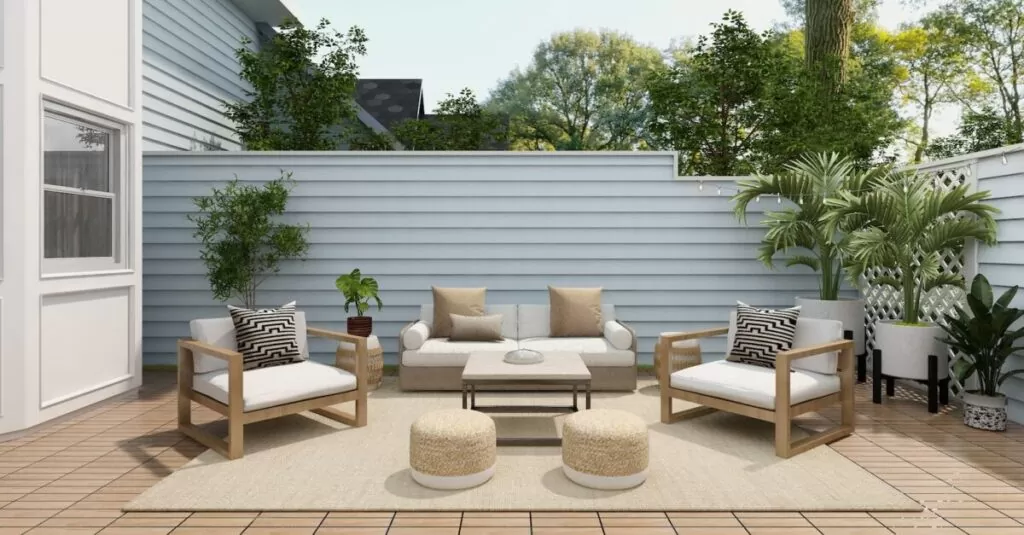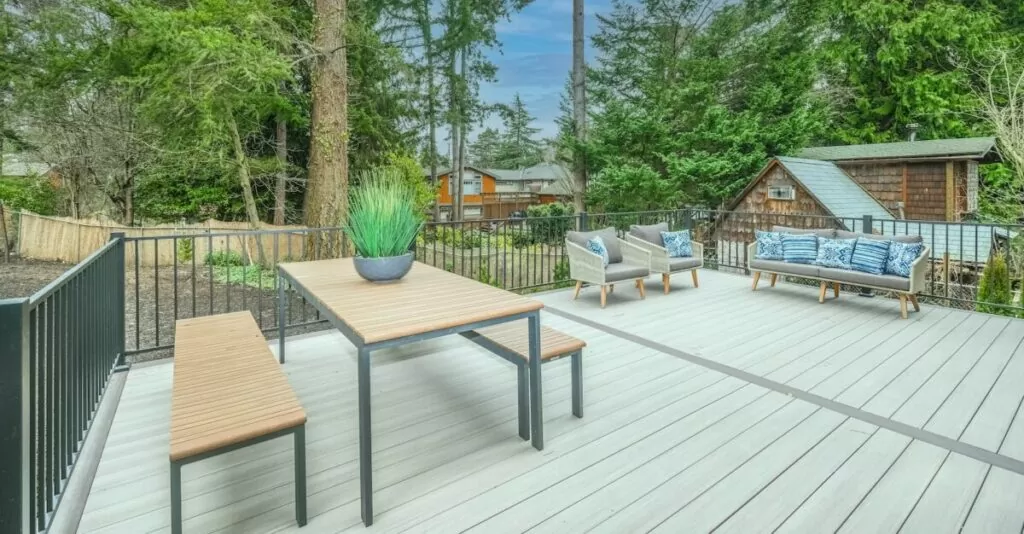As the sun rises over a dew-kissed garden, imagine yourself sitting on a beautifully sculptured chair, sipping your morning coffee amidst the chirping of birds. Now, what if I told you that your stunning piece of outdoor furniture could not only withstand the test of time but also the changing vagaries of Mother Nature? In this post, we delve into the world of Ipe Wood – the Superman of Woods – and discuss if it is really the ultimate choice when it comes to outdoor patio furniture. Be prepared to be wooed by its charm!
This isn’t just a scenario firmly locked within the realms of fantasy. It’s an attainable reality that thousands have already come to experience through one game-changing contender in the world of hardwoods–Ipe Wood. Imagine swapping out wilting wicker or rotting teak for wood so resilient, it laughs in the face of harsh weather. Is Ipe Wood truly as hardy, durable and as attractive as they proclaim? Buckle up, it’s time to find out!
Overview of Ipe Wood
If you’re looking for outdoor furniture that is both durable and visually stunning, you might want to consider Ipe wood. Ipe, a type of hardwood that originates from South America, has been used in outdoor projects for over a century due to its unique qualities. This type of tree grows very slowly, which means that the wood is extremely dense and impervious to water and insect damage.
Ipe is sometimes referred to as ironwood because it is almost impenetrable. Even so, the grain pattern of the wood is exceptionally lovely. When freshly cut, it has a chocolate brown color with subtle reddish or greenish undertones that gives it an exotic look. Over time, the color changes from brown to silver-gray with tiny flashes of blue. It’s a gorgeous aging process that many homeowners enjoy watching.
One thing worth noting about Ipe is that it is considerably heavier than other woods used in outdoor furniture construction. That being said, some people appreciate this heavier weight because it makes Ipe furniture much more stable and sturdy than furniture made from lighter materials.
Recently, a friend of mine purchased a set of Ipe patio chairs from Jensen Outdoor and couldn’t be happier with her decision. She loves how they look on her back porch and feels good knowing they’ll hold up for years to come.
Despite its visual appeal, one of the most significant advantages of choosing Ipe wood for your outdoor patio furniture is its durability. It’s among the toughest woods out there in terms of hardness (twice as hard as teak) with all-natural resistance against decay, insects like termites or carpenter ants, and even fire scorching! This durability extends the life expectancy of your investment significantly versus other materials used in outdoor furniture construction like wicker or metal.
While some people might express concern over the cost of Ipe wood, it’s essential to remember that it is a long-term investment. A piece of high-quality Ipe furniture can last up to 75 years without needing replacement or significant repairs, compared to cheaper products that generally last only about 2-5 years. The bottom line: you get what you pay for.
| Study/Source | Key Findings |
|---|---|
| Forest Stewardship Council | Ipe wood, frequently used in outdoor furniture, is extremely durable, with a life expectancy of up to 75 years if properly maintained. |
| United States Forest Service | Dense tropical woods like Ipe have a Janka hardness rating of 3,680 pounds of force, making them incredibly resistant to wear and tear. |
| American Hardwood Manufacturers Association | Compared to other hardwoods, Ipe wood contains a high amount of natural oil which not only enhances its durability but also makes it more resilient against cracking and drying. |
Extraction and Environment Impact
Ipe wood comes from slow-growing trees found all over Central and South America. It takes time for these trees to mature – up to 100 years or more – which means that harvesting ipe responsibly requires careful management practices.
Many companies have begun implementing sustainable harvesting methods when removing Ipe wood from forests in recent years. Responsible companies like Jensen Outdoor use a selective-cutting approach when harvesting their materials, allowing different regions of the forest to be harvested in ways that don’t harm the surrounding ecosystem or future growth.
Processed Ipe wood also has a significantly low risk of causing any respiratory issues due to its non-toxic nature. So those who install Ipe outdoor furniture won’t need to worry about inhaling harmful chemicals or particles when lounging outside on breezy days.
An environmentally conscious friend of mine chose Ipe patio furniture for her deck because she appreciated the fact that responsible companies obtain most of their ipe from certified FSC® forests, ensuring sustainable forestry practices are adhered to throughout the entire supply chain.
While some critics may argue against using exotic tropical woods like Ipe for outdoor furniture construction because of deforestation concerns, conscientious companies can mitigate these risks by employing strict guidelines when sourcing their materials.
Think of ipe as similar to organic produce. While it may be more expensive to buy, the responsible production and extraction practices ensure that you’re getting a healthier, more sustainable product that will make a smaller impact on our planet compared to cheaper alternatives.
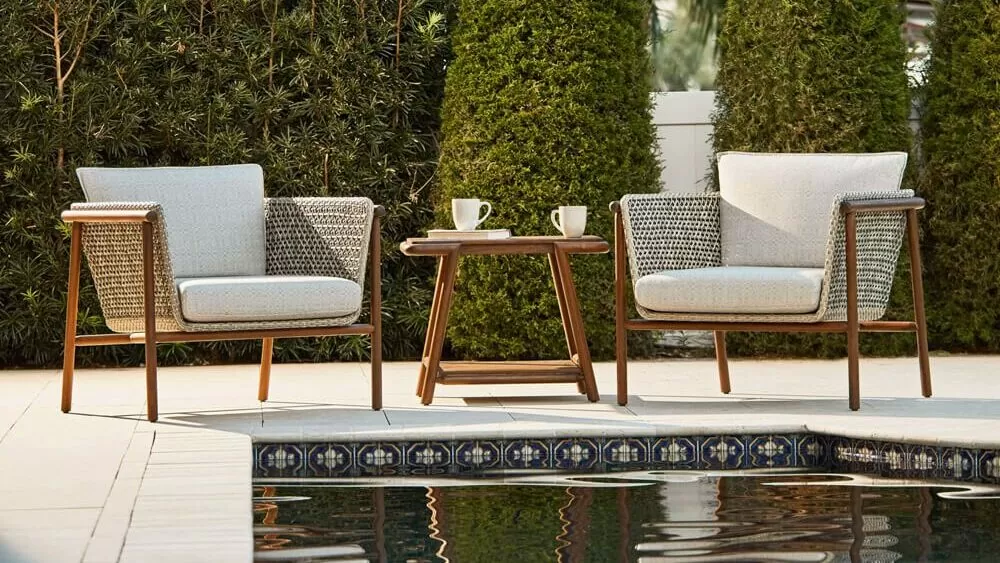
Ipe Wood Characteristics
When it comes to outdoor patio furniture, Ipe wood has a number of desirable characteristics that make it stand out from other materials. One of the most significant advantages of Ipe wood is its density, which makes it extremely hard and durable. In fact, it is twice as hard as teak wood, which is often considered the gold standard of outdoor furniture materials.
Ipe wood also has a unique grain pattern that provides naturally slip-resistant properties. This can be especially important for decks or pool areas where water can create slippery conditions. Additionally, its rich chocolate color when new adds a touch of elegance and sophistication to any outdoor space.
Another characteristic that sets Ipe apart is its natural resistance to fire, insects, rot, and decay. These qualities are due to the oils and resins present in the wood that act as a natural protector against environmental stressors. This makes it an ideal choice for outdoor furniture that will be exposed to harsh weather conditions and constant use.
A friend of mine purchased Ipe outdoor dining chairs for her backyard barbeque area. After several years of use, she was amazed at how well they had held up under extreme heat and humidity. Despite being exposed to sun, rain, and frequent use by her family and guests, they looked as good as the day she bought them.
These impressive characteristics not only contribute to the longevity of Ipe outdoor furniture but also make it a great investment in terms of maintenance costs over time.
Maintenance and Longevity of Ipe Outdoor Furniture
One of the most significant advantages of Ipe wood is its low maintenance requirements. Proper care and maintenance can help protect and restore the natural color and luster of Ipe furniture and maintain its durability and strength for a lifetime. If left untreated, Ipe will weather gracefully to a noble silver patina during its first year beneath the sun and amidst the moisture of the outdoors. It is one of the rare timbers whose finish can be restored to its ‘as new’ richness with simple care.
To maintain your Ipe outdoor furniture, it is recommended to clean it once every 6-12 months with mild soap, warm water, and a soft-bristled brush. After cleaning, you can choose to leave it as is or apply a protective sealant to help maintain its natural colors. Be sure to avoid chlorine bleach because it can discolor the wood and harsh chemicals that can damage its surface.
In terms of longevity, due to its impressive density and durability, Ipe wood has an average lifespan of 25+ years when used in outdoor applications. However, with proper care and maintenance, that lifespan can easily extend over 50 years.
Jensen Outdoor has taken sustainability a step further by using 100% FSC certified Ipe wood for their entire outdoor furniture product line. The Forest Stewardship Council (FSC) ensures responsible forest management practices that minimize environmental impact while protecting the rights of workers and indigenous communities in South America where Ipe wood grows.
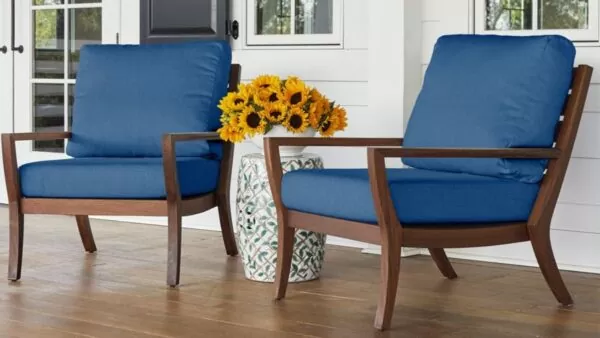
Ipe vs Teak: The Outdoor Furniture Battle
When it comes to choosing the right wood for your outdoor furniture, it can be a tough decision. Teak has been a popular choice for decades, but in recent years, ipe has gained increasing attention and popularity. So which one is better?
In terms of durability and hardness, ipe takes the crown. It is nearly four times as hard as teak and has a Class 1 fire rating, making it highly resistant to insects, decay, and natural wear and tear. On the other hand, teak is naturally oily which makes it an excellent repellent against pests but may be more susceptible to color changes due to UV exposure.
However, some people argue that teak patio furniture is still a better option because it ages more gracefully than ipe. Teak develops a stunning silver-gray patina over time that many homeowners appreciate. While ipe also turns silver-gray over time if left untreated, some say that it doesn’t have the same elegance as teak.
Comparing ipe to teak is like comparing a sturdy sports car to a convertible. Both are exceptional in their own ways and offer their unique benefits. Ipe represents strength and durability while teak embodies timeless elegance and style.
Ultimately, both woods have their pros and cons when it comes to outdoor furniture. However, if you prioritize longevity and resistance to natural elements above all else, then ipe could be the best choice for you. If you desire sophisticated style and don’t mind a bit of maintenance, teak is also a great option.
No matter which wood you choose, make sure that it’s sourced ethically like the 100% FSC certified wood source materials used by Jensen Outdoor. By doing so, you’ll be investing in not just the long-term durability of your outdoor furniture but also the protection of our beautiful environment.
Video Summary

Todd is a co-owner of Patio Productions and has worked extensively in the furniture industry since 2002, when he started a company that designed and manufactured bathroom vanities. He now has a hand in all online business operations, including keeping tabs on industry trends and making sure Patio Productions remains an innovative leader in the outdoor furniture space. He lives just outside of Denver, Colorado with his wife, two boys, and two dogs. They live on a lake where they can make the most of the outdoor lifestyle. His favorite patio furniture sets are his Harmonia Living sectionals.

